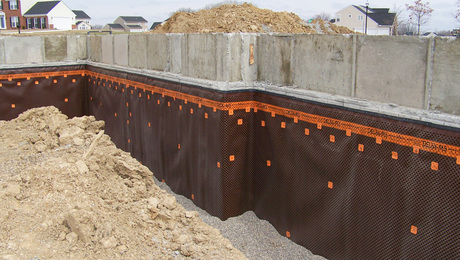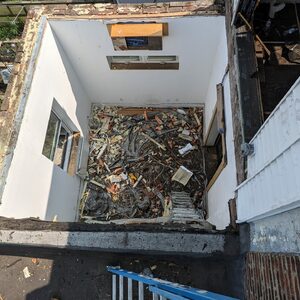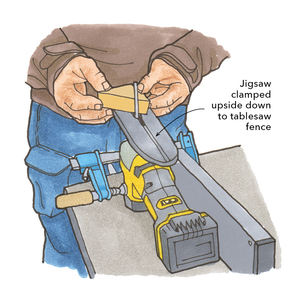Podcast 277: Cursory Inspections, Hot Closets, and Appraisals for Efficient Homes
Brian, Kiley, and Patrick hear from listeners about hardcore DIY projects and CNC-cut plywood before taking listener questions about inadequate inspections, uncomfortable closets, and getting credit for an efficient home.
Follow the Fine Homebuilding Podcast on your favorite app. Subscribe now and don’t miss an episode:
 |
 |
Help us make better episodes and enter for a chance to win an FHB Podcast T-shirt:
www.finehomebuilding.com/podcastsurvey
Joanna shares her remodeling saga undertaken with her husband Matthew. Carson reports you can have cabinet plywood cut by a shop with a CNC. Ryan discusses looking at old issues of FHB. John asks if 30-second inspections are the norm. Danny wants to know why there’s cardboard at the bottom of his rafter bays. Zachary shares his favorite tools and discusses energy-efficient appraisals.
Editor Updates:
Brian’s: Thoughts on Charleston
Kiley’s: Storm damage
Jeff’s: Storm damage
Patrick: Broken washer
Listener Feedback 1:
Joanna from Falls Church, VA writes: Hello FHB experts! My husband, Matthew, is a 33-year-old stormwater engineer and FHB subscriber/ podcast listener. This past year and a half, he has dedicated every weekend, every weeknight, and all of his brain power to build us a home. His birthday is August 24 and I am hopeful that you might be willing to help me celebrate all the work he has done in this past year. Maybe a shout out on the podcast? Maybe you have bigger or more unique ideas? Reading your magazine is one of the few breaks he will take and he hasn’t finished a single one since he started this work, hah. Listening to your voices has become a weekend ritual. He respects you and he would certainly be honored to hear your support of his efforts.
We own a 1950 Cape Cod in Falls Church, VA (DC Metro). Matthew wanted to build an addition and renovate the house to be greener… for fun. So he designed the plans, learned all of the trades, taught me how to be his right hand man, and we did it. We rented the excavator and dug the foundation of our addition. We built the foundation walls. We demoed the whole house down the studs. We took off the roof. We installed a flat roof on the greedy shed dormer. We replaced all of the plumbing. We replaced all of the electrical. We expanded the front porch and poured stairs. We insulated our crawlspace. We did pay for framing, HVAC, window installation, and drywall. It has been all-consuming and Matthew has not broken. On a typical weekday he works his eight hours at his paying job, works 4-6 hours at the house each night, and then studies the next step of the project before bed. He is tirelessly dedicated to this house and has been for over a year. I am beyond proud of him and his ambitions. I want to celebrate him and his many many accomplishments. He has proven that we can build an airtight and beautiful home when we turn away from all of our hobbies, spend all of our money, lose sleep, and try very hard to do the best job we can. 🙂
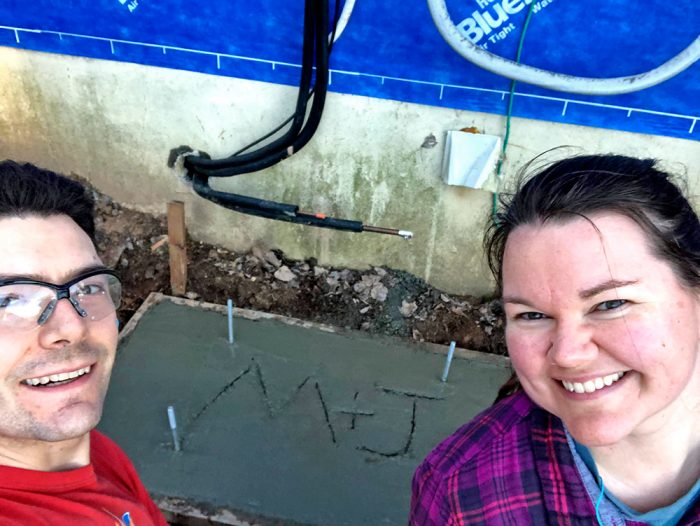 |
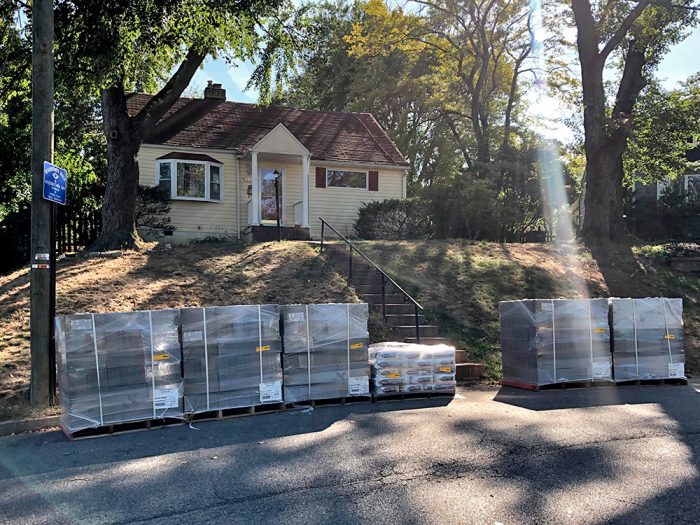 |
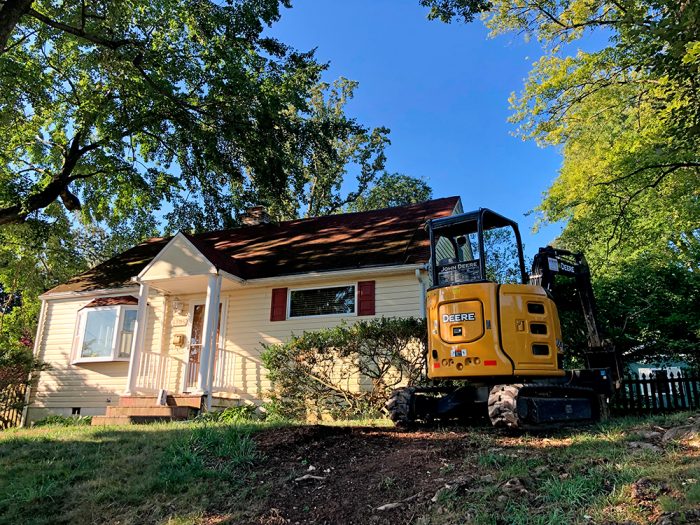 |
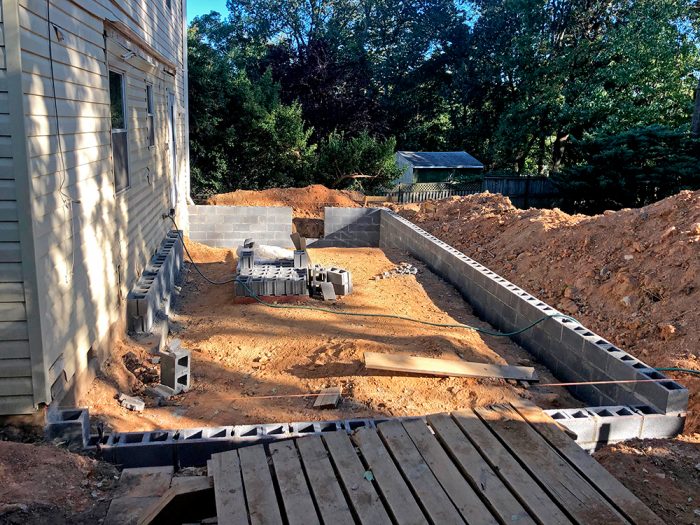 |
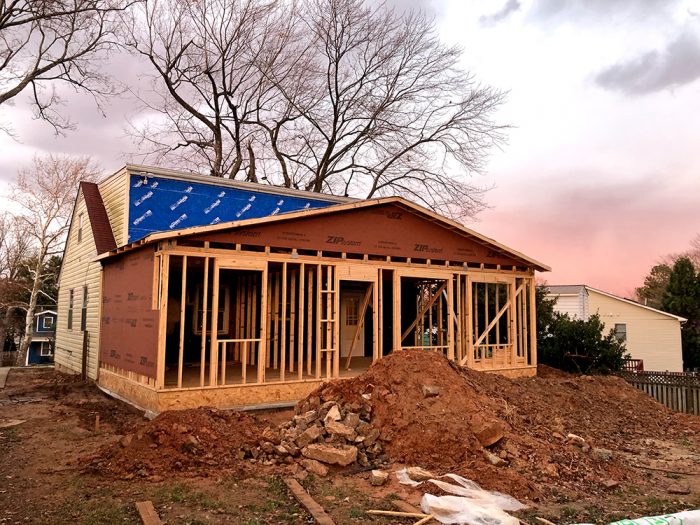 |
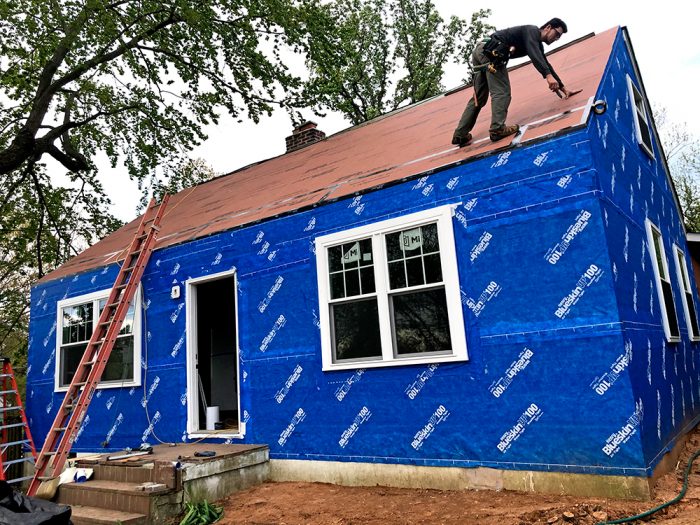 |
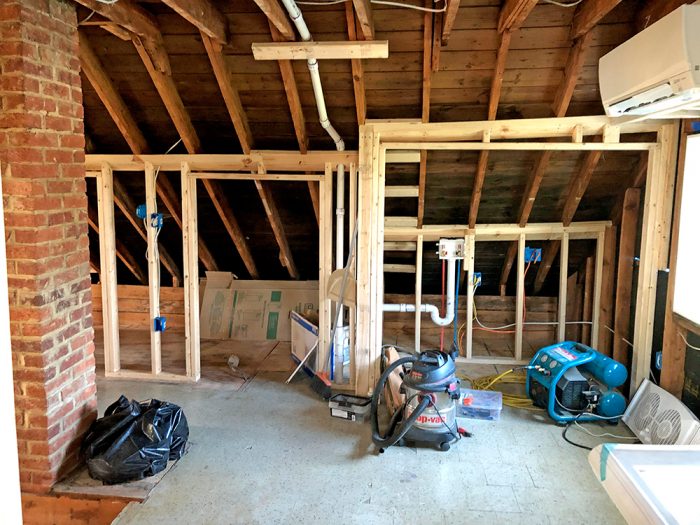 |
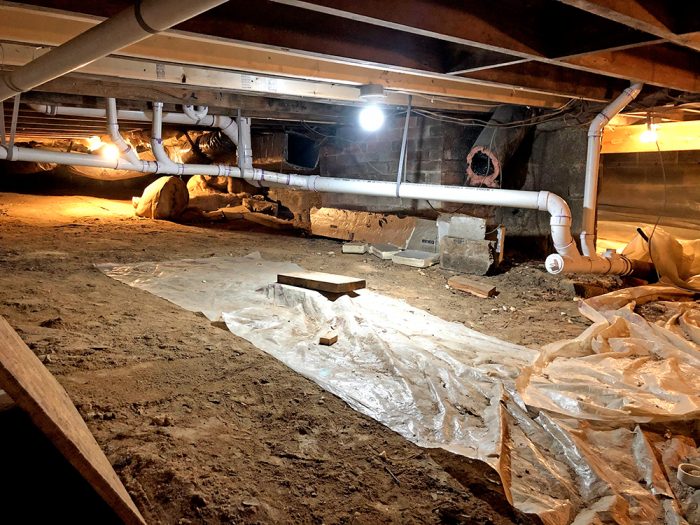 |
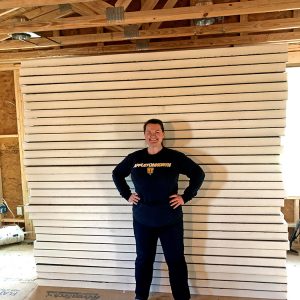 |
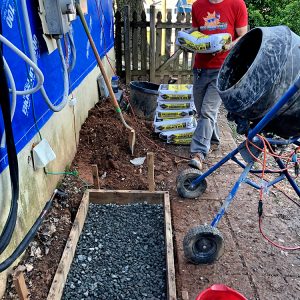 |
 |
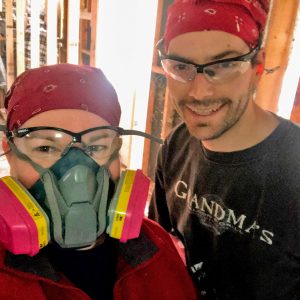 |
We have finally moved back in after 8 months of renting. We have one shower and one toilet. Most of the rooms are painted and raw hardwood floors are installed. Cabinets are almost fully installed! Trim work will take months I’m sure. Who needs doors, right?! Our current furniture is one bed, one dresser, one TV, and two folding camp chairs. I expect this to be our new normal for awhile.
I feel like you folks are the only ones who can truly understand what this experience has been like. Might you be interested in helping me celebrate? Thank you for reading. We’ll be listening, as always.
Related Links:
Listener Feedback 2:
Carson from Ore-reh-ghen writes: Hello Fine Money Saving Podcast, In previous episodes you have mentioned that buying RTA cabinets or Ikea cabinetry is much easier than building them yourself which may not be worth the time investment. I noticed that my local sheet supplier has CNC services and can cut plywood to size mechanically for a very reasonable price. I have never heard this mentioned and how tos on cabinetry never seem to start with “have your supplier cut all sheets to size for you”; instead, they proceed to show them cutting a plethora of heavy 4×8 sheets hoisted onto a tablesaw 4x larger than the one I have. Do you have any experience with CNC cut plywood for cabinetry? Is this a happy middle ground between an RTA cabinet service and a DIY build in terms of effort and cost?
Related links:
Listener Feedback 3:
Ryan from Redondo Beach, CA writes: Hi All! Listening to podcast 271 and wow…it’s gonna take me a while to digest the changes but I’m sure you’ll pull it off just fine as you’ve always done.
The real reason I wanted to write though was about the discussion regarding people keeping the physical magazines. I’ve been a subscriber for about 10 years now and soak up every ounce of information I can from FHB and every other source. About 7 years ago I got into a building discussion with my uncle-in-law as he saw me reading the magazine. The next day he came back with three boxes of FHB, all the way back to the first issues. I took them home and read through every single one cover to cover, it was an amazing experience!
If I’m going to go back to a past issue for reference I just do it via the web site and digital archive, but I’m hoping one day I can pass on my collection of the magazines to another person that’s eager to soak up the amazing wealth of information you’ve covered over the years. It’s one thing to read an article on the web, but there’s nothing like having an entire issue in your hands and flipping through the pages as you enjoy all the work you all have done to create the FHB experience.
As always, keep up the good work. Your loyal FHB supporter and fellow BS geek.
Related links:
Question 1: What should I do if building inspectors aren’t really inspecting my project?
John from New Jersey writes, I’m a big FHB fan, as a DIYer and someone generally interested in homebuilding. We’re in the middle of a kitchen and bath renovation in our 1930s house in New Jersey. The kitchen hadn’t been touched since the ’50s and the bathroom was original to the house. The work is substantial, including a new 26 ft. steel beam and footings in the basement to replace a load bearing wall, all new plumbing from the main to replace aging brass, and a new subpanel to service all new circuits to that side of the house and replace the original metal-clad fabric wiring. We aren’t doing the work ourselves.
Our first round of inspections were today – framing, rough plumbing and electrical. Each of the three inspectors spent approximately 20-30 seconds in the house, and none of them went to the basement. The electrical work especially didn’t seem ready: the subpanel is still in its packaging. I assumed that inspection would be delayed or result in a failure. We passed all inspections with flying colors.
The permits for this job weren’t cheap – around $1500. This is the first time we’ve done a renovation on this scale and I’m wondering now why we should have even bothered. We have complete confidence in our general contractor and his subs, but as a homeowner I expect the inspectors to ensure all of the work is done to code. Is this normal? Is it worth reporting the inspectors, or is that just going to be a waste of time? Can I claim this as a donation on my tax return?
Related links:
Question 2: Why are there sheets of cardboard between my attic insulation and my roof?
Danny from Calvert county Maryland writes, My family and I moved into my in-laws house about 3 years ago it’s a large two story house. Shorty after we move in we notice that the closets would be extremely hot in the house in the warmer (weird I know). The two bedrooms we use the closets are on the exterior wall. Long story short was in the attic the other day for a different problem and notice something weird with the venting. Around the whole house the builder place what looks to be cardboard up vertically not sure what he was hoping to achieve. Would appreciate any feedBack you can provide. If more pictures need please let me know. Long time listener.
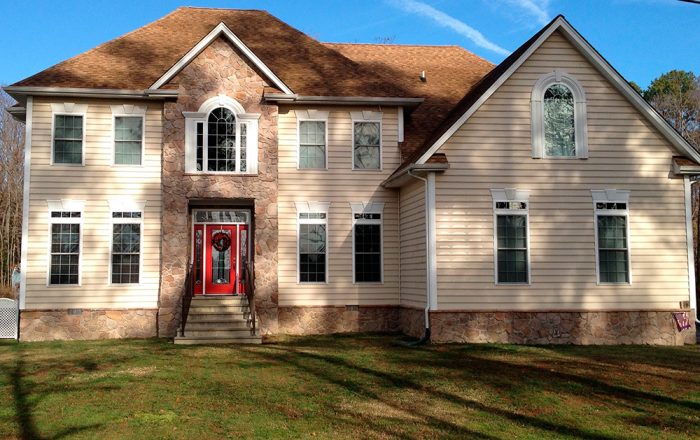 |
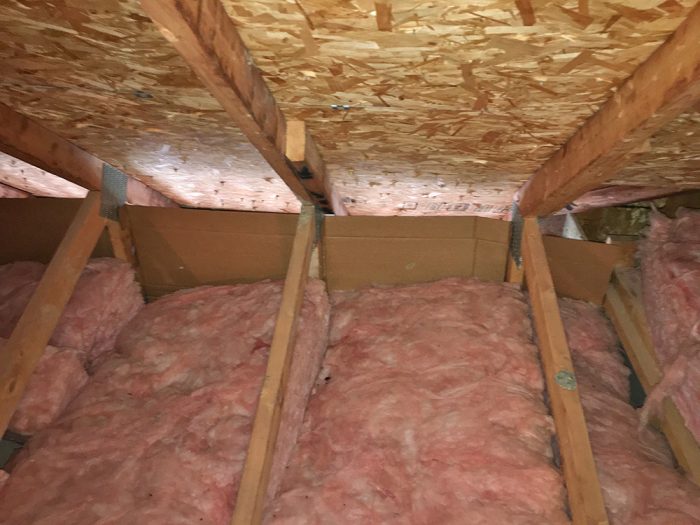 |
Related links:
More Listener Feedback: Essential tools and appraising energy-efficiency improvements
Zachary from Annapolis, MD writes, Hi FHB podcast, In episode 269 you had asked what our favorite “cant live without tools” are. I have two that I’d like to share.
First is a marking knife. I think I’ve heard you talk about them before, but they’re a super fine knife blade that you use instead of a pencil to mark your wood. The accuracy you can get is so much better than a pencil, and it will mark pretty much any surface. For instance if I have very wet pressure treated wood I can never get a pencil line to show up, but a marking knife will always leave an easy to see mark. On the inverse of accuracy, if I just need to mark generally and I don’t care too much about the accuracy, I’ve found 1.3mm mechanical pencils to be far superior to anything else. They’re often used to teach kids basic handwriting, so they’re cheap, easy to grab, and the lead is thick enough that they won’t break.

Lastly, later in the episode you talked about appraisers and what they seem to not factor in especially when it comes to energy efficiency. There actually is an official form, form 820.06 which can be used to highlight the energy efficient upgrades and its supposed to help raise the value of the house when taken into consideration. That being said, I just went through the appraisal process for a refinance and was frustrated when the appraiser was far more interested in the new appliances that last less then ten years instead of the insulation and air sealing that will last the life of the house. I also handed him the filled out form 820.06 and he had never heard of it even though its from the Appraisal Institute. Hopefully as time goes on appraisers will start to learn about the importance of these areas, but I’m not holding my breath.
Thanks for everything you do.
Related links:
Help us make better episodes and enter for a chance to win an FHB Podcast T-shirt: www.finehomebuilding.com/podcastsurvey
If you have any questions you would like us to dig into for a future show, shoot an email our way: [email protected].
If we use your question we’ll send you a FHB Podcast sticker!
FHB Podcast T-shirts!
Represent your favorite podcast! Available in several styles and colors. Made from 100% cotton. Find the Podcast t-shirt and more cool products in the Fine Homebuilding Store.
This episode of the Fine Homebuilding podcast is brought to you by Sherwin Williams.
Supporting your business is their business at Sherwin-Williams®. With outstanding paint and color solutions and industry-leading product innovation, they’ll help you deliver more per square foot—and exceed homeowner expectations. Sherwin-Williams is there through every step of the process to help you find the best product for your project, and provide color solutions to make your homes stand out. When pros needs pros, Ask Sherwin-Williams™.
Visit buildersolutions.sherwin-williams.com for more.
Fine Homebuilding podcast listeners can now get 20% off anything in the Taunton store, including the The Visual Handbook of Building and Remodeling, 4th Edition.
Use the discount code FHBPODCAST to take advantage of this special offer.
We hope you will take advantage of a great offer for our podcast listeners: A special 20% off the discounted rate to subscribe to the Fine Homebuilding print magazine. That link goes to finehomebuilding.com/podoffer.
The show is driven by our listeners, so please subscribe and rate us on iTunes or Google Play, and if you have any questions you would like us to dig into for a future show, shoot an email our way: [email protected]. Also, be sure to follow Justin Fink and Fine Homebuilding on Instagram, and “like” the magazine on Facebook. Note that you can watch the show above, or on YouTube at the Fine Homebuilding YouTube Channel.
The Fine Homebuilding Podcast embodies Fine Homebuilding magazine’s commitment to the preservation of craftsmanship and the advancement of home performance in residential construction. The show is an informal but vigorous conversation about the techniques and principles that allow listeners to master their design and building challenges.
Other related links
-
- All FHB podcast show notes: FineHomebuilding.com/podcast.
- #KeepCraftAlive T-shirts and hats support scholarships for building trades students. So order some gear at KeepCraftAlive.org.
- The direct link to the online store is here.






